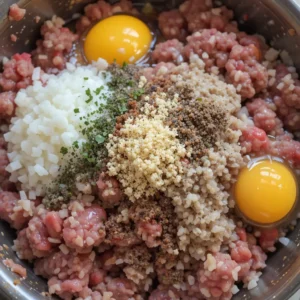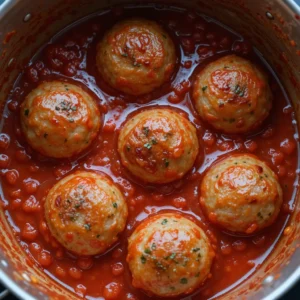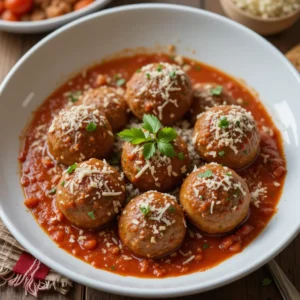If you’re a fan of classic comfort food with a unique twist, then you’re in for a treat! Porcupine meatballs are not only delicious but also incredibly easy to make. Unlike traditional meatballs, these have a delightful texture, thanks to the addition of uncooked rice, which expands as they cook, giving them their signature “porcupine” look.
Furthermore, this dish has been a beloved family favorite for generations, offering both nostalgia and warmth in every bite. In fact, its origins can be traced back to the Great Depression, when families had to stretch their ingredients while still creating filling and satisfying meals. Because of this history, porcupine meatballs have remained a staple in many households, passed down from one generation to the next.
Even though this dish is simple to prepare, a few secret ingredients can take it to a whole new level. By incorporating unique seasonings and cooking techniques, you can elevate the flavors and make these meatballs truly unforgettable. So, whether you’re an experienced home cook or just getting started in the kitchen, this recipe is guaranteed to impress.
What Are Porcupine Meatballs?
At first glance, the name “porcupine meatballs” might sound a bit unusual. However, don’t worry—there’s no actual porcupine in the recipe! Instead, these meatballs get their name from the way they look once they’re cooked. As the meatballs simmer, the rice inside them expands and begins to poke out, resembling the quills of a porcupine. This fun and creative dish has been a beloved comfort food for generations, and for good reason.
Moreover, porcupine meatballs are not only easy to prepare but also incredibly flavorful. Traditionally, they are made with ground beef, uncooked rice, and a blend of seasonings, all simmered in a rich tomato-based sauce. As a result, they turn out tender, juicy, and full of savory goodness. Unlike regular meatballs, which often require breadcrumbs, the rice in this dish serves as both a binder and a texture enhancer, making the meatballs soft and slightly chewy.
In addition, this dish has a fascinating history. Dating back to the Great Depression era, porcupine meatballs became popular because they were an affordable way to stretch ingredients while still creating a hearty, satisfying meal. Over the years, different variations have emerged, with families adding their own special touches to make the recipe their own.
Now that you know what porcupine meatballs are, let’s explore the essential ingredients that make them so delicious!
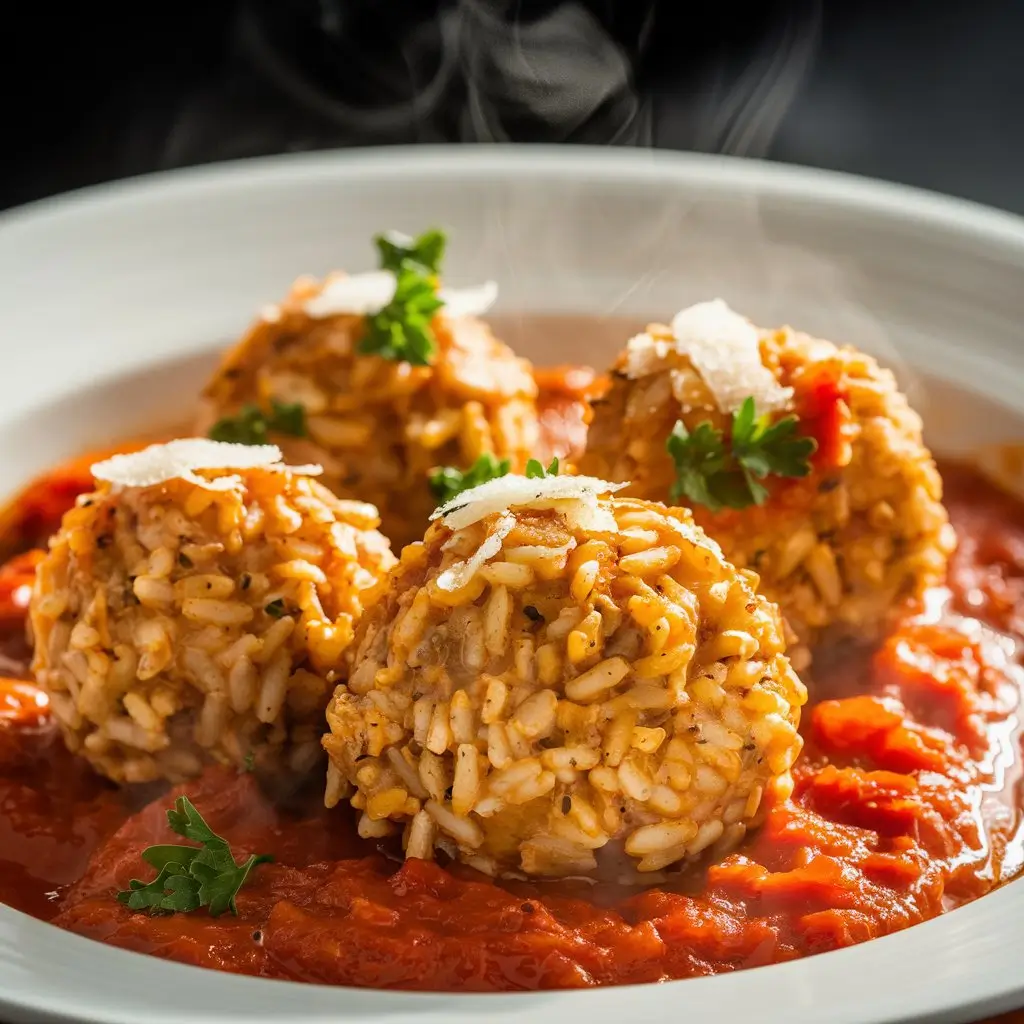
Ingredients for the Perfect Porcupine Meatballs
To achieve the best flavor and texture, you need the right combination of ingredients. Not only do these components add depth and richness, but they also ensure that the meatballs remain tender and juicy throughout the cooking process. Below is everything you’ll need to bring this dish to life.
Main Ingredients for Porcupine Meatballs
First and foremost, let’s start with the base ingredients that give the meatballs their structure and signature taste:
- Ground beef – Provides the hearty, meaty base of the dish. You can also substitute it with ground turkey or chicken for a leaner option.
- Uncooked long-grain rice – Instead of using breadcrumbs, this dish relies on rice to create texture and binding. As the rice cooks, it expands, giving the meatballs their signature “porcupine” appearance.
- Eggs – Help bind the meat mixture together so the meatballs don’t fall apart.
- Onion, finely chopped – Adds sweetness and depth to the meatballs, enhancing their overall flavor.
- Garlic, minced – Provides an aromatic boost, making the meatballs even more savory.
- Salt and black pepper – Essential seasonings that bring out the best in every ingredient.
- Tomato sauce or crushed tomatoes – Serves as the rich and tangy base of the sauce, infusing the meatballs with flavor as they cook.
- Beef broth or water – Helps cook the rice while keeping the meatballs moist.
Secret Ingredients That Elevate the Dish
While the classic version is already delicious, adding a few special ingredients can make these meatballs truly unforgettable:
- Parmesan cheese – Enhances the umami flavor and adds a creamy texture.
- A pinch of cinnamon or nutmeg – Although unexpected, this small addition creates warmth and depth in every bite.
- Fresh parsley and oregano – Bring in a burst of freshness and balance out the richness of the dish.
- Soy sauce – Adds a slight umami kick while enhancing the overall savoriness.
- A splash of apple cider vinegar – Brightens the sauce and creates a slight tanginess that makes all the flavors pop.
Now that we have our ingredients ready, let’s move on to the step-by-step cooking process!
Step-by-Step Cooking Instructions for Porcupine Meatballs
To ensure that your porcupine meatballs turn out perfectly every time, follow these simple steps. Not only will this method guarantee tender and flavorful meatballs, but it will also make the cooking process stress-free and enjoyable.
1. Prepare the Meatball Mixture
Before anything else, you’ll need to create the perfect blend for your meatballs.
- In a large mixing bowl, combine the ground beef, uncooked rice, finely chopped onion, minced garlic, eggs, salt, black pepper, Worcestershire sauce, and Parmesan cheese.
- Using clean hands or a spoon, mix the ingredients until everything is well incorporated. However, be careful not to overmix, as this can make the meatballs dense and tough.
- Once mixed, let the mixture sit for about 5 minutes. This allows the flavors to meld together and helps the rice absorb some moisture.
2. Shape the Meatballs
Now that your mixture is ready, it’s time to form the meatballs.
- Using your hands, scoop out small portions of the meat mixture and roll them into golf ball-sized meatballs.
- Place them on a tray or plate, ensuring they don’t stick together.
- If the mixture feels too sticky, lightly wet your hands with water to make rolling easier.
3. Sear the Meatballs for Extra Flavor
Although some recipes skip this step, searing the meatballs first helps develop a rich, caramelized crust, which adds an extra layer of depth to the dish.
- A large skillet requires one tablespoon of heated olive oil at medium temperature.
- Carefully place the meatballs in the skillet, making sure not to overcrowd them.
- Brown them on all sides for about 4–5 minutes. They don’t need to be fully cooked at this stage, as they will continue to cook in the sauce.
- The finished meatballs need to be transferred onto a plate while waiting for further steps.
4. Prepare the Tomato Sauce
Sauce maintains equivalent importance to meatballs when it comes to Spaghetti and Wednesday combination. A well-balanced, flavorful sauce enhances the dish and ensures the meatballs remain juicy and tender.
- In the same skillet, add crushed tomatoes, beef broth, soy sauce, a splash of apple cider vinegar, and a pinch of cinnamon.
- Stir everything together and let the sauce simmer for about 5 minutes.
- Taste and adjust seasoning if needed—adding more salt, pepper, or a pinch of sugar if the sauce is too acidic.
5. Simmer the Meatballs
Finishing the meatballs is the next step after obtaining the ready-made sauce.
- Carefully return the meatballs to the skillet, making sure they are evenly distributed in the sauce.
- Cover the pan with a lid and let the meatballs simmer over low heat for 30 to 40 minutes.
- Stir occasionally and add extra broth if the sauce becomes too thick.
During this time, the rice inside the meatballs will absorb the liquid from the sauce, expanding and creating the signature porcupine-like appearance.
6. Final Touches and Serving of Porcupine Meatballs
Once the meatballs are fully cooked, it’s time to plate and enjoy!
- Sprinkle fresh parsley and an extra dash of Parmesan cheese on top.
- Serve hot with mashed potatoes, roasted vegetables, or crusty bread for a complete and satisfying meal.
With all the ingredients coming together perfectly, your porcupine meatballs will be bursting with flavor, texture, and heartwarming goodness.
Now that you’ve mastered the cooking process, let’s explore some serving suggestions and variations to suit different tastes and diets!
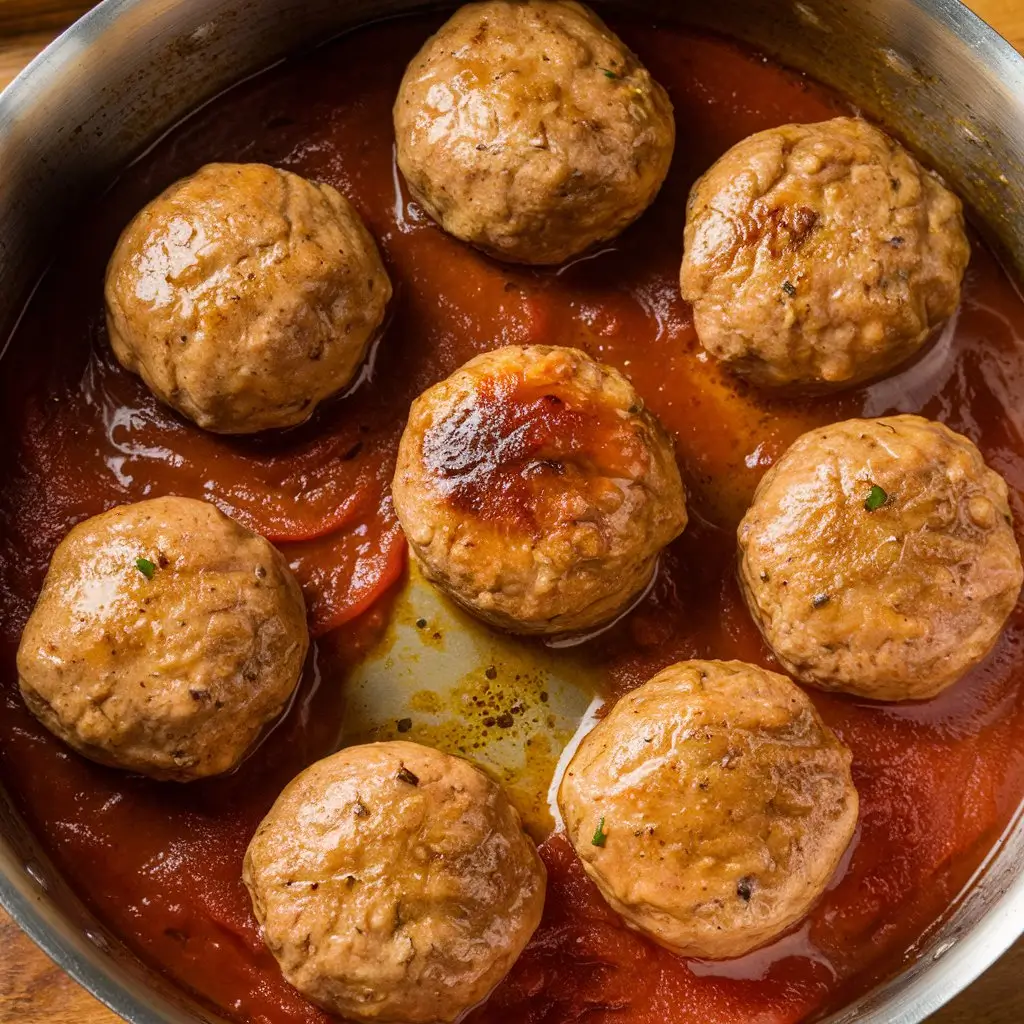
Serving Suggestions and Pairings for Porcupine Meatballs
Now that your porcupine meatballs are perfectly cooked, it’s time to decide how to serve them. While these meatballs are delicious on their own, pairing them with the right sides can make them even more satisfying. Whether you prefer something light or extra hearty, there are plenty of options to enhance your meal.
Classic Pairings for a Hearty Meal
If you’re craving a comforting, well-rounded meal, try serving your porcupine meatballs with:
- Mashed potatoes – The creamy texture balances the rich tomato sauce, making each bite irresistibly smooth.
- Buttered noodles – A simple side that soaks up the sauce and adds extra heartiness.
- Steamed white or brown rice – Keeps the meal classic while doubling down on the rice theme.
- Crusty bread or garlic toast – Perfect for dipping into the flavorful sauce.
Lighter Side Options
For those looking for a lighter meal, consider these fresh and vibrant sides:
- Roasted or steamed vegetables – Broccoli, zucchini, or asparagus add a pop of color and nutrition.
- A crisp green salad – Tossed with a lemon vinaigrette, it provides a refreshing contrast to the rich meatballs.
- Cauliflower rice – A great low-carb alternative that still absorbs the delicious sauce.
Unexpected but Delicious Pairings
If you’re feeling adventurous, try these unique pairings for a creative twist:
- Polenta – The creamy texture pairs beautifully with the tomato sauce.
- Spaghetti squash – A healthy alternative to pasta that keeps the dish light and flavorful.
- Grilled pita bread – Adds a Mediterranean touch and is perfect for scooping up the sauce.
Now that you have plenty of serving ideas, let’s explore how you can modify this recipe to suit different dietary needs!
Recipe Variations for Different Diets with Porcupine Meatballs
One of the best things about porcupine meatballs is their versatility. With a few simple swaps, you can make this dish suitable for various dietary preferences while keeping all the flavors intact.
Gluten-Free Option
Although traditional porcupine meatballs are naturally gluten-free (since they don’t use breadcrumbs), you should still double-check certain ingredients:
- Ensure the Worcestershire sauce and soy sauce are gluten-free, or replace them with tamari.
- Opt for homemade or certified gluten-free tomato sauce to avoid hidden gluten additives.
- Pair with gluten-free pasta, rice, or vegetables instead of wheat-based sides.
Low-Carb and Keto-Friendly Version
Since rice is a key ingredient, you might wonder if it’s possible to make a low-carb version. Luckily, with a few tweaks, you can still enjoy a keto-friendly take on this dish:
- Swap the rice for grated cauliflower or almond flour to maintain texture without the carbs.
- Use a sugar-free tomato sauce to reduce unnecessary sugars.
- Increase the amount of Parmesan cheese and eggs to help bind the meatballs without rice.
Vegetarian and Plant-Based Alternative
If you prefer a meatless version, don’t worry—you can still enjoy the flavors and texture of porcupine meatballs!
- Replace ground beef with lentils, mashed chickpeas, or crumbled tofu for a high-protein base.
- Use cooked quinoa or finely chopped mushrooms instead of rice to maintain texture.
- Substitute eggs with a flaxseed or chia seed mixture (1 tablespoon seeds + 3 tablespoons water = 1 egg).
- Simmer in a vegetable-based marinara sauce instead of beef broth.
Dairy-Free Adjustments
For those who are lactose-intolerant or avoiding dairy, making this recipe dairy-free is quite simple:
- Skip the Parmesan cheese or use a dairy-free alternative for extra flavor.
- Replace butter (if using for serving) with olive oil for a rich, dairy-free touch.
- Check the labels on tomato sauce to make sure no hidden dairy ingredients are added.
Spicy Variation for Heat Lovers
If you enjoy a little kick in your meals, you can easily turn these porcupine meatballs into a spicy delight:
- Red pepper flakes or chopped jalapeños serve as optional spices for the meat mixture.
- Mix in a teaspoon of smoked paprika and cayenne pepper for a deeper heat.
- Use a spicy tomato sauce or add a splash of hot sauce before serving.
By making these simple adjustments, you can enjoy porcupine meatballs in a way that fits your dietary needs without sacrificing flavor.
With so many variations and pairing options, there’s truly a version of this dish for everyone. Now that you know how to customize your meal, let’s move on to some pro tips to make your porcupine meatballs even better!
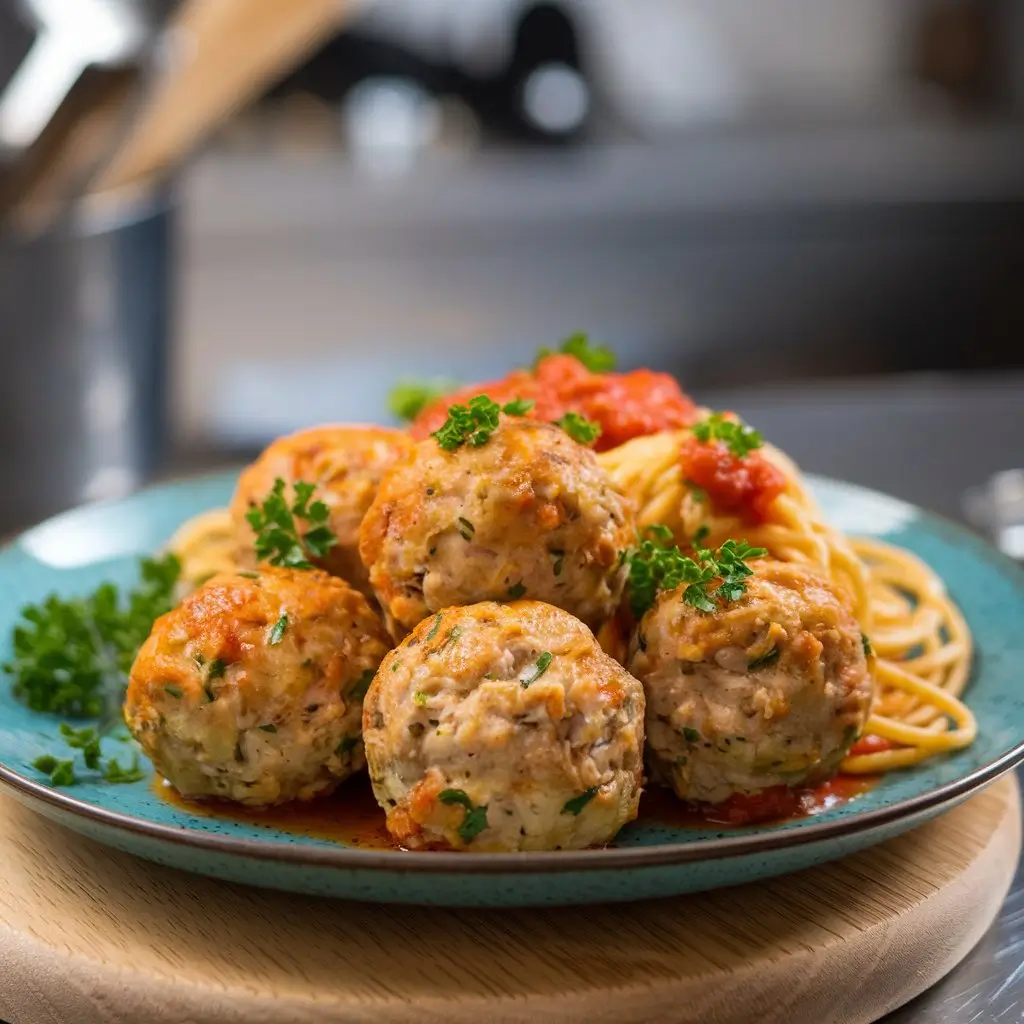
Expert Tips for the Best Porcupine Meatballs
Making porcupine meatballs might seem simple, but a few expert tricks can take them from good to absolutely incredible. Whether you’re preparing them for the first time or looking to refine your technique, these tips will help you achieve the perfect texture, flavor, and consistency every time.
1. Don’t Overmix the Meat Mixture
First and foremost, be gentle when mixing your ingredients. Overworking the meat can result in dense and tough meatballs instead of light and tender ones. Instead, mix just until everything is combined, using a fork or your hands to keep the texture airy.
2. Use the Right Type of Rice
Although any long-grain rice will work, uncooked white rice is the best choice for traditional porcupine meatballs. Since it absorbs liquid more easily than brown or wild rice, it softens properly as the meatballs cook. If you prefer brown rice, make sure to parboil it first so it doesn’t remain crunchy.
3. Brown the Meatballs Before Simmering
While you can cook porcupine meatballs directly in the sauce, searing them first creates a delicious crust and enhances the overall depth of flavor. Simply brown them in a hot skillet for a few minutes before adding them to the sauce. This step isn’t necessary, but it makes a big difference!
4. Simmer Low and Slow
Since the rice inside the meatballs needs time to cook, it’s important to simmer them gently rather than boiling them. A slow simmer allows the flavors to develop while keeping the meatballs moist and tender. If the sauce starts to reduce too much, add a little extra broth or water to maintain the right consistency.
5. Don’t Skip the Seasoning
Because porcupine meatballs have a mild base, proper seasoning is key. In addition to salt and pepper, consider adding a dash of Worcestershire sauce, garlic powder, or smoked paprika for a more complex taste. If you like a bit of heat, a pinch of red pepper flakes will do the trick.
6. Let the Meatballs Rest Before Serving
Once the meatballs are fully cooked, resist the urge to serve them immediately. Instead, let them rest for 5–10 minutes in the sauce. This short resting period allows the flavors to meld and ensures that the rice has fully absorbed the liquid, making every bite even more delicious.
Now that you’ve mastered the cooking process, let’s talk about how to properly store and reheat your leftovers!
How to Store and Reheat Leftovers of Porcupine Meatballs
One of the best things about porcupine meatballs is that they taste just as good—if not better—the next day. Whether you have extra portions or want to make a batch ahead of time, storing and reheating them correctly will help maintain their flavor and texture.
Storing Leftovers
If you plan to enjoy your leftovers within a few days, proper storage is key. Here’s how:
- Refrigerator: Once cooled, transfer the meatballs and sauce to an airtight container. The storage length should not exceed 4 days inside the refrigerator.
- Freezer: If you want to keep them longer, place the cooled meatballs and sauce in a freezer-safe container or zip-top bag. The food items remain fresh for three months.
💡 Pro Tip: Freeze the meatballs separately from the sauce for better texture when reheating.
Reheating Leftovers
Reheating porcupine meatballs properly ensures they remain tender and juicy. Here are the best methods:
On the Stovetop (Best for Preserving Texture)
- Place the meatballs and sauce in a skillet over medium-low heat.
- A drop of broth or water will help the food from drying out.
- Cover and let them heat for 10–15 minutes, stirring occasionally.
In the Oven (Great for Large Batches)
- Preheat your oven to 350°F (175°C).
- Arrange the meatballs in an oven-safe dish and cover with foil.
- Bake for 20–25 minutes until heated through.
In the Microwave (Quickest Option)
- First, arrange the meatballs inside a covered microwave-safe serving dish before draping them with a wet paper towel.
- Stir the meal in short periods while heating in successive 30-second intervals until the dish reaches the proper temperature.
- Be careful not to overheat, as the rice can become chewy.
By following these storage and reheating tips, you can enjoy your porcupine meatballs anytime—without losing any of their rich, comforting flavors.
Now that you know how to store and reheat them, let’s wrap things up with a final call to action!
The History of Porcupine Meatballs
While porcupine meatballs may seem like a modern comfort food, their origins actually date back several decades. Interestingly, this dish became popular during the Great Depression and World War II, when families had to make the most of limited ingredients. Instead of using expensive breadcrumbs or fillers, home cooks discovered that uncooked rice could stretch ground meat while also adding an intriguing texture.
A Dish Born Out of Necessity
During times of economic hardship, people had to get creative with whatever ingredients were readily available. Ground beef was affordable, and rice was an inexpensive staple that could help bulk up meals. As a result, porcupine meatballs became a practical yet delicious solution for feeding families on a budget.
At the same time, the dish gained recognition in community cookbooks and home economics classes, making it a staple in American households. Not only was it budget-friendly, but it was also easy to prepare, packed with protein, and incredibly satisfying—qualities that made it a long-lasting favorite.
Why the Name “Porcupine” Meatballs?
One of the most frequently asked questions is, “Why are they called porcupine meatballs?” The texture as well as visual appearance of the dish reveal the answer to this question. As the meatballs cook, the rice inside expands and starts to poke out, resembling tiny porcupine quills. This playful and memorable name helped make the dish even more appealing, especially to children.
The Evolution and Modern Variations of Porcupine Meatballs
As the years went by, porcupine meatballs continued to evolve. While the classic version with tomato sauce remains the most popular, different regions and cultures have added their own twists:
- In the Midwest, cooks often use a creamy mushroom sauce instead of tomato sauce, creating a richer, milder version.
- In the South, some variations include a splash of hot sauce or Cajun seasoning for extra spice.
- Globally, similar dishes exist, such as Swedish meatballs with rice or Middle Eastern kofta-style meatballs served in tomato-based sauces.
Thanks to its simplicity and adaptability, porcupine meatballs have stood the test of time, becoming a beloved comfort food in many households. Even today, the recipe remains a favorite among home cooks, proving that sometimes, the simplest dishes are the most enduring.
More Lunch Recipes to Try
If you love this Porcupine Meatballs, you’ll want to try more Lunch recipes that are just as easy and delicious! Here are a few must-try options:
- Crispy & Juicy Crown Fried Chicken Recipe
- The Best Guacamole Recipe
- The Ultimate Loaded Nachos Recipe
- Crispy Homemade Onion Rings Recipe
FAQs
Porcupine meatballs get their name from the way the rice in the meatballs sticks out after cooking, resembling the quills of a porcupine. The rice expands and pokes through the meat, giving them their distinctive look.
Porcupine meatballs may fall apart if the meat mixture is too wet, the binding ingredients (like egg or breadcrumbs) aren’t enough, or if they aren’t cooked at the right temperature. To prevent this, make sure the mixture is well-combined, add enough binding agents, and cook the meatballs gently, either by simmering them in sauce or baking at a moderate heat.
Porcupine food typically consists of plant-based materials. They are herbivores and feed on a variety of plants, including leaves, bark, fruits, seeds, and some woody plants. In the wild, they often nibble on tree bark, especially during the winter months when other food sources are scarce.
Meatballs are common in both Swedish and Turkish cuisines. Swedish meatballs (Köttbullar) are small, served with gravy, mashed potatoes, and lingonberry jam. Turkish meatballs (Köfte) are made with minced meat, herbs, and spices, typically grilled or fried, and served with flatbread or yogurt. Both are distinct but share the basic concept of minced meat shaped into balls.
Porcupine meatballs go well with mashed potatoes, rice, steamed vegetables, a light salad, or garlic bread. These sides complement the flavors and help balance the meal.
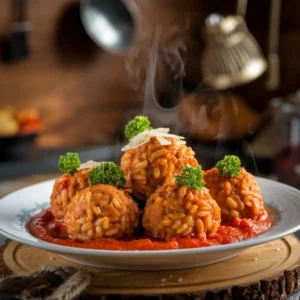
The Secret Ingredients of Porcupine Meatballs: A Must-Try Lunch Recipe!
Equipment
- Mixing bowl
- Skillet or frying pan
- Spoon or hands for mixing
- Lid for covering during simmering
- Tray or plate for shaping meatballs
Ingredients
- Ground beef
- Uncooked long-grain rice
- Eggs
- Onion, garlic
- Tomato sauce or crushed tomatoes
- Beef broth or water
- Seasonings: salt, black pepper, Worcestershire sauce, soy sauce, Parmesan cheese
- Secret ingredients (optional): cinnamon, apple cider vinegar, fresh parsley, oregano
Instructions
- Mix ground beef, rice, eggs, onion, garlic, and seasonings.

- Shape the mixture into meatballs.

- A skillet should be used to brown the meatballs for improved taste.

- Prepare the tomato sauce and simmer for 5 minutes.

- Add the meatballs to the sauce, cover, and simmer for 30–40 minutes.

- Serve with fresh parsley and extra Parmesan cheese.


